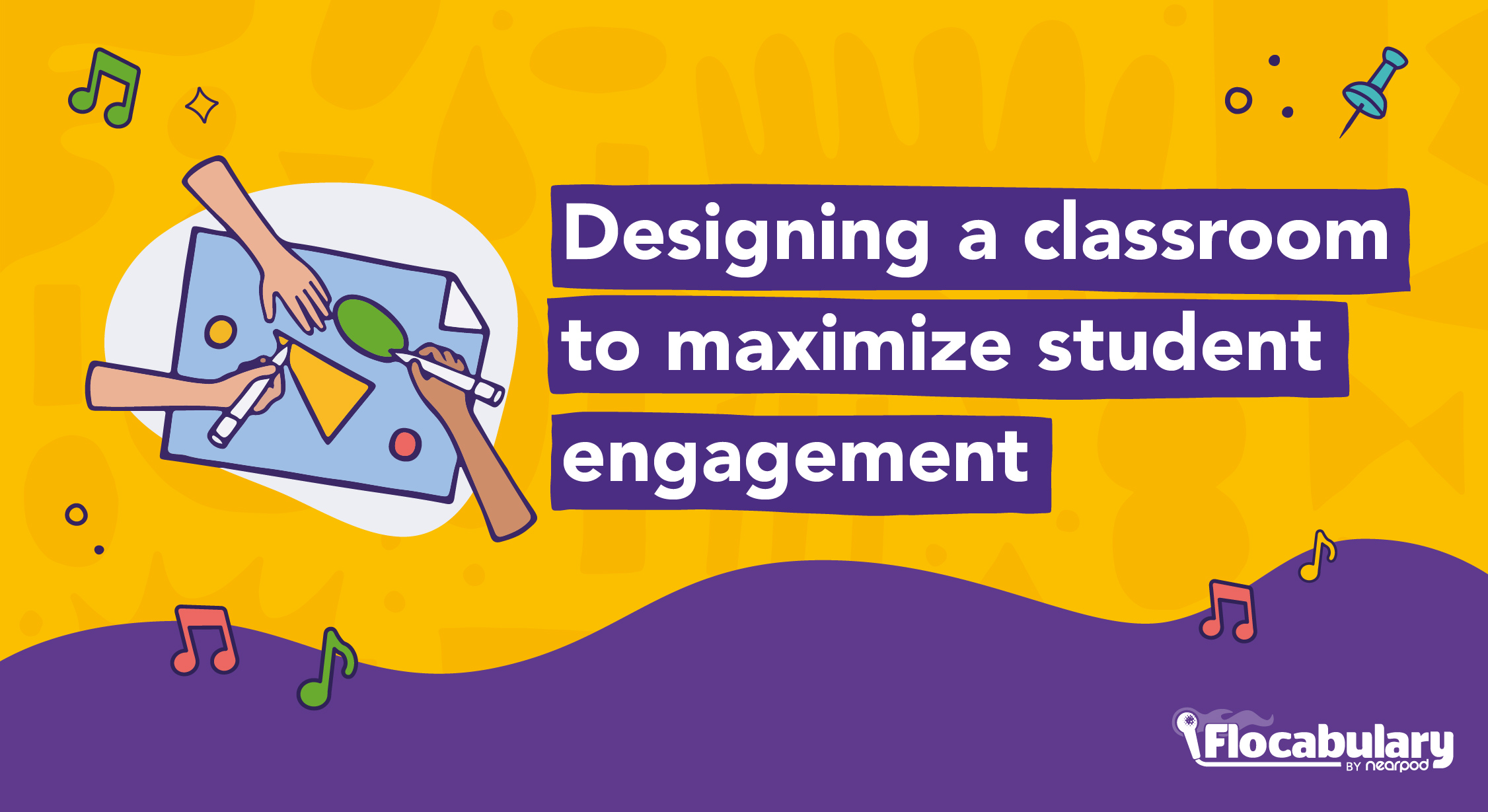
Classroom Design and Student Engagement
Engaging learning spaces are as much about physical and interior design as it is instructional: one study found that the physical space of schools can positively (or negatively) affect a student’s academic performance by as much as 25% in one school year.
Businesses are moving away from the Office Space days of cubicles and fluorescent lighting, opting instead for couches, standing desks, bean bags and other methods of creating comfortable environments. (In fact, I’m writing this sprawled out on a couch tucked away in a cozy corner of Flocab HQ.) The same should go for classrooms, and yet it has stagnated.
Here are some things to consider when evaluating a shift in your classroom design:
Create different pockets of lighting in your classroom to create a comfortable learning space for your students. Some students may feel energized under bright lights, while others may focus better under softer lighting. Using bookcases or plants along with floor or desk lamps can help create cosy nooks.
We already know that sitting at your desk all day is bad for adults, so why would we expect the same of children?
The days of linear desk arrangements facing the blackboard are long gone for many educators, but keeping the same desk arrangement all month (or year) long can grow tired, too. With the help of your students, move things around throughout the year!
Cori Spellane, a middle school Language Arts Specialist from Los Fresnos, TX, suggests flexible seating options like mats, blankets or pillows can boost productivity in students. Learn more about starting the school year on a strong foot here.
Creating a space that’s inviting and flexible for both collaborative group projects as well as independent work doesn’t require a costly investment of shiny new furniture (although if you can swing it, more power to ya), but it can help foster building the 4Cs in your classroom: critical thinking, creativity, communication and collaboration.
Some teacher favorites for upgrading a classroom on a budget include:
- Raising funds for flexible seating furniture via DonorsChoose, Indgiegogo or other crowdsourcing sites
- Getting thrifty through discount stores like Oriental Trading Company and FiveBelow, or furniture and decor staples Amazon or IKEA
- For those crafty-scrappy educators, Pinterest is a treasure trove for resourceful projects to help transform your classroom
(Don’t forget to follow Flocabulary on Pinterest for lesson plans, engaging classroom activities and more!)
How often do we see classrooms of cookie-cutter desks and chairs facing the whiteboard—the very same arrangement seen in dusty old photographs? We don’t teach the same as we did 100 years ago, so why have our classroom environs failed to evolve, too? We hope you found these tips helpful, and continue learning with these other resources, too.
- Today’s Classrooms Should Be About Flexible Teaching—Not Furniture
- Flexible Seating in the Classroom (Teach Create Motivate blog)
- Collaborative Learning Spaces: Classrooms That Connect to the World
- Reimagining the Modern Classroom
- A Place for Learning: The Physical Environment of Classrooms
- New Classroom Design Trends Fostering Engaged Students
